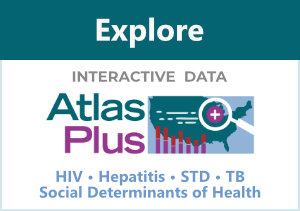Disparities in HIV, Viral Hepatitis, STDs, and TB
Defining Health Disparities
Despite prevention efforts, some groups of people are affected by HIV, viral hepatitis, STDs, and TB more than other groups of people. The occurrence of these diseases at greater levels among certain population groups more than among others is often referred to as a health disparity. Differences may occur by gender, race or ethnicity, education, income, disability, geographic location and sexual orientation among others. Social determinants of health like poverty, unequal access to health care, lack of education, stigma, and racism are linked to health disparities.

 African AmericansOverview of health disparities found in black communities
African AmericansOverview of health disparities found in black communities HispanicsSummary of health disparities among Hispanics/Latinos
HispanicsSummary of health disparities among Hispanics/Latinos AsiansInformation on health disparities among Asians in the United States
AsiansInformation on health disparities among Asians in the United States

CDC is developing future priorities and identifying best practices for addressing societal factors that increase risk for HIV, Viral Hepatitis, STDs and TB. The goal of these efforts is to help reduce health disparities and promote health equity. For more information, visit NCHHSTP’s Social Determinants of Health website.


